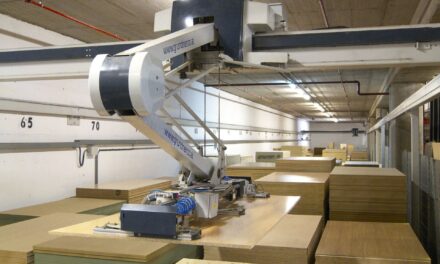 Fully integrated drive systems – mechanical and hydraulic – offer many benefits in terms of easier procurement, improved performance and ease of maintenance. Increasingly, plant engineers and OEMs are adopting a systems approach rather than buying individual transmission components and building their own drives, says Dave Brown of Brevini UK.
Fully integrated drive systems – mechanical and hydraulic – offer many benefits in terms of easier procurement, improved performance and ease of maintenance. Increasingly, plant engineers and OEMs are adopting a systems approach rather than buying individual transmission components and building their own drives, says Dave Brown of Brevini UK.
Imagine you had to build your own car from individual components. You would have to source every part, assemble them, test them, get an MOT, then maintain the vehicle throughout its life. Buying a complete car from a reputable dealer with guarantees and a service contract is somewhat easier.
Enthusiasts may relish the idea of a year or more worth of weekends in the garage building a kit car. But even the most devoted of them will recognise that they are creating a fun vehicle for gentle Sunday afternoon outings, not a workhorse for winter commuting, motorway pounding and family holidays.
Among machine builders, OEMs and end-users, there is an increasing awareness that they could apply their car-buying logic to their professional work and source complete drive systems rather than build their own.
“Integrated drive systems offer advantages on four levels,” explained Dave Brown of Brevini UK. “First up is procurement; it is so much easier to buy from one source rather than multiple. Also the need to do engineering calculations for each component is reduced to specification of the input and output.
“Next is removal of the engineering effort to assemble all the components, testing each one in turn; this can have a significant effect on project completion and time to market. The third is that the drive can be seen as sub-system and optimised within the overall machine for maximum productivity, efficiency and reliability. Finally there are the life cycle considerations such as regular servicing, replacement of wearing parts, and – longer term – refurbishments and upgrades, all of which should become easier.”
In short, an integrated drive or hydraulic system is likely to offer improved productivity, reduced maintenance and downtime, and longer operating life. This amounts to quantifiable added value over the lifetime of the plant or machine.
Brevini has been aware of this trend evolving over several years and has been proactive in supporting it by developing its ranges of both mechanical power transmission products and hydraulic system components. It has also ensured that all of its sales’ engineers are fully conversant with all the parts and their integrations, so that they can develop optimised solutions for every project with which they are involved.
Brown again: “We have developed our product ranges partly by designing components in-house and partly by acquiring companies that already produce best in class components. In some cases the acquired product ranges have had to be slightly redesigned to fit perfectly with the rest of the Brevini ranges, but this relates to interfaces and other details rather than the fundamental design.
“Thus we have improved our customers’ buying experience by becoming an organisation with a complete product offering and the technical skills to quickly develop systems that are bespoke to project requirements.”
Looking at an example of the integrated approach, Brevini combined its mechanical and hydraulic products and expertise in a project for the recycling industry. The machine, designed to process and separate waste, requires multiple drives delivering different torque and speed inputs to the drive shafts. From the machine requirements, Brevini was able to calculate and optimise an overall solution providing a cost effective drive system without compromising the performance.
The solution was complete, including everything from the hydraulic power pack; from the proportional control valves for PLC control, through to the hydraulic motors integrated with the reduction gearboxes.
In the international rail industry, Brevini has supported a number of projects including converting road-going maintenance and service vehicles to run on rails. Typically, the heart of the drive system is hydraulic, with gearboxes used to optimise speed and power output. On such applications traction control is very important, which Brevini achieves using standardly available features within its hydraulic motor range – again, optimising the solution for the real application needs.
“Of course, customers can still buy single products – and the still get the full support of the entire Brevini Group,” said Brown. “In many cases it is always going to be the best way to proceed. But our integrated system work has been increasing steadily over a number of years and we expect this trend to continue as industries all over the world strive for ever-greater efficiencies in all aspects of their work.”



